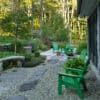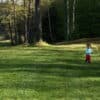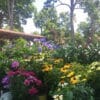For generations this property in southern New Hampshire has been treasured by one family as a place to gather, garden, grow food, and harvest syrup from the surrounding maple forest. The historic home was renovated to preserve its antique charm and blend with a modern farmhouse addition. The clients asked JMMDS to replace their old gardens with a fresh landscape design that would make the most of the views from the house toward the rolling hills and give the family relaxed spaces to enjoy the outdoors.
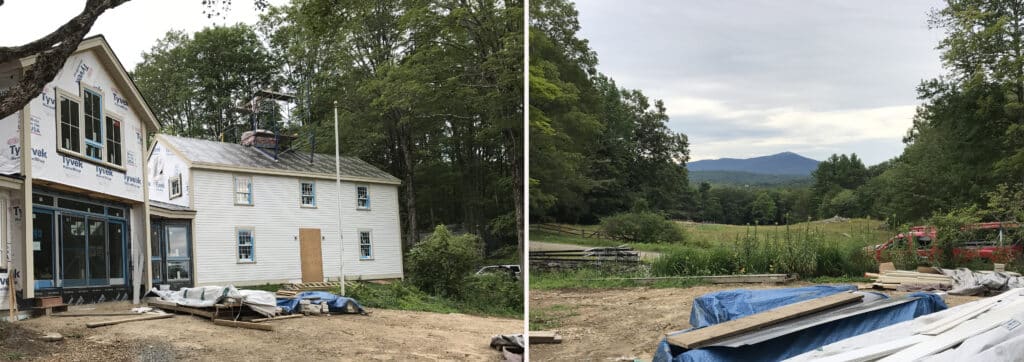 Before: The modern addition features large windows to capture the view towards Mount Monadnock. With the exception of some stone walls needing repair, the landscape was a blank slate awaiting a new vision.
Before: The modern addition features large windows to capture the view towards Mount Monadnock. With the exception of some stone walls needing repair, the landscape was a blank slate awaiting a new vision.
JMMDS landscape designer Bethany Gracia crafted a design for gardens that wrap around the house and feature local stone with a blend of native and old-fashioned perennial plants and shrubs.
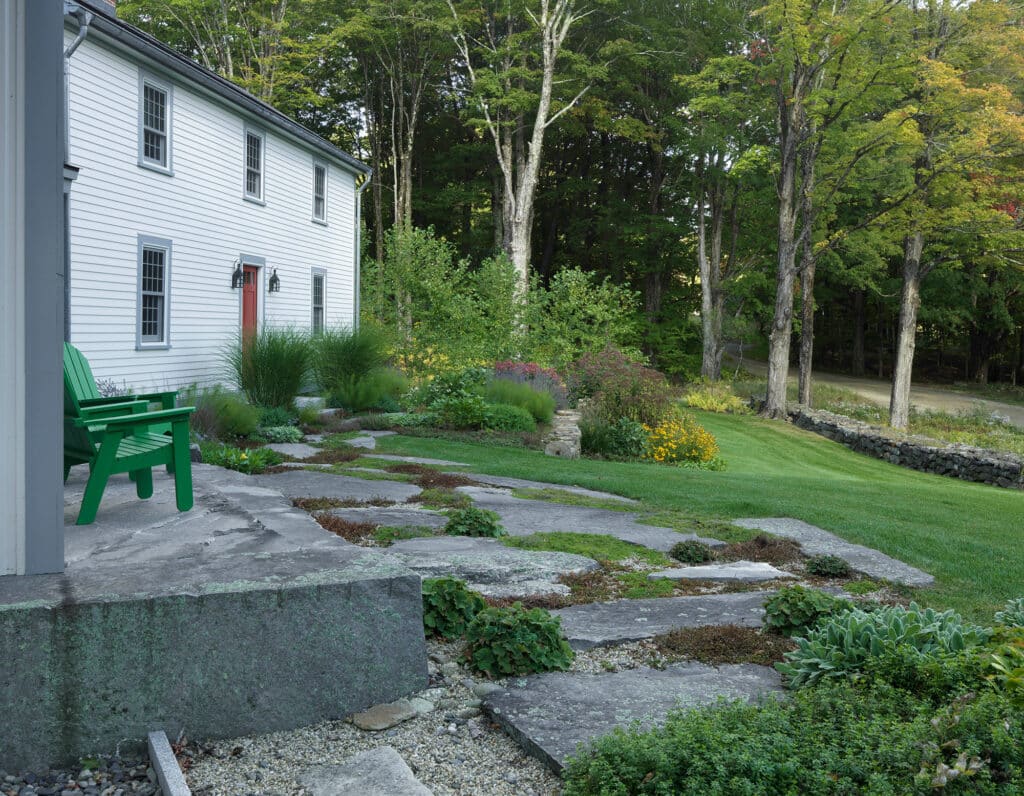 Wide natural cleft granite slabs at the foot of the addition’s window wall step onto a terrace of more local stone and low-growing plants, a nod to the alpine granite landscape found at Mount Monadnock’s peak. Local gravel was used in lower traffic areas to allow melting snow piles to drain easily in spring.
Wide natural cleft granite slabs at the foot of the addition’s window wall step onto a terrace of more local stone and low-growing plants, a nod to the alpine granite landscape found at Mount Monadnock’s peak. Local gravel was used in lower traffic areas to allow melting snow piles to drain easily in spring.
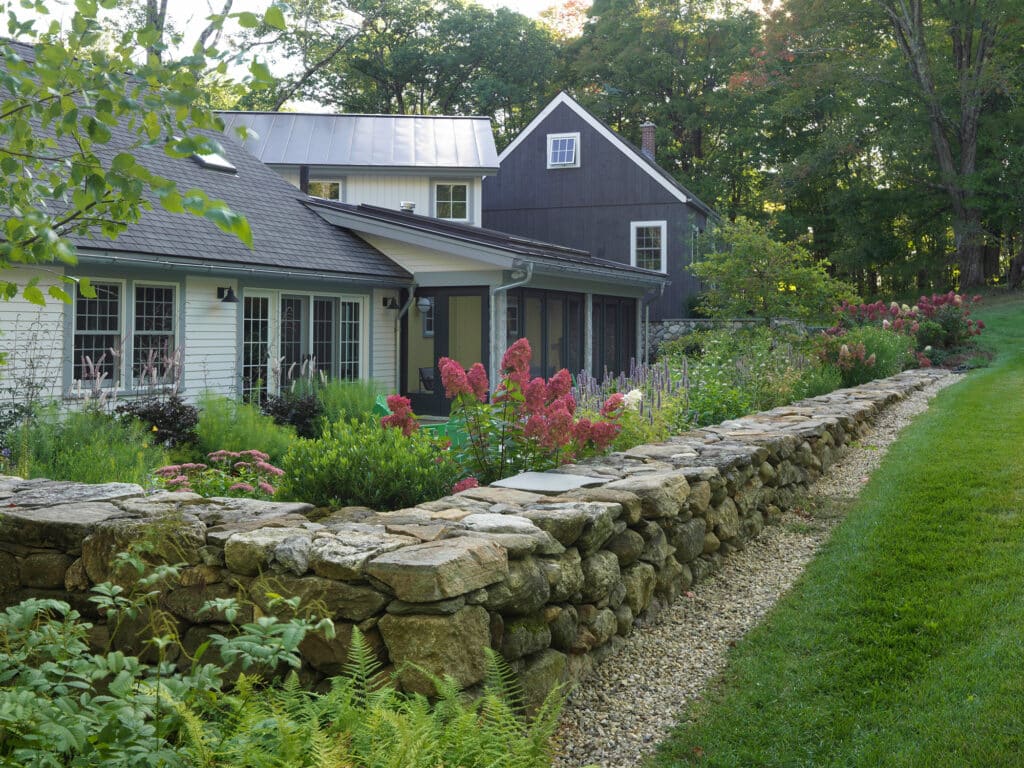 Around the back of the house, fieldstone from the property was repurposed to build enclosing garden walls.
Around the back of the house, fieldstone from the property was repurposed to build enclosing garden walls.
 Bethany designed the back side of the house for intimate gatherings nestled in lush garden beds. An antique stone trough set into the walled garden and strategically placed as a focal point from the dining room is a water feature that provides the peaceful sound of water trickling into the basin from a weathered copper watering can rosette.
Bethany designed the back side of the house for intimate gatherings nestled in lush garden beds. An antique stone trough set into the walled garden and strategically placed as a focal point from the dining room is a water feature that provides the peaceful sound of water trickling into the basin from a weathered copper watering can rosette.
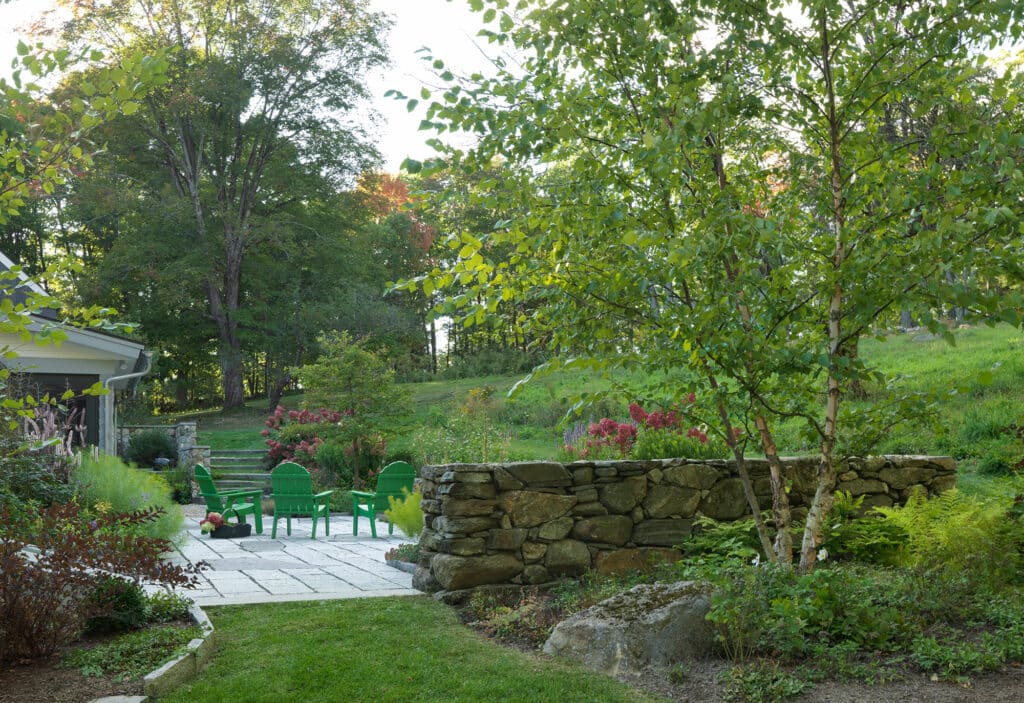 The terrace is made of cut pavers and natural-edge slabs, all of New Hampshire granite, set with wide joints for permeability. Granite fence posts from the original garden were repurposed as stair treads in the planted stairway to a mown path through the hillside meadow above. A barbecue nook is barely visible, tucked into the shelter of the stone walls just outside the kitchen.
The terrace is made of cut pavers and natural-edge slabs, all of New Hampshire granite, set with wide joints for permeability. Granite fence posts from the original garden were repurposed as stair treads in the planted stairway to a mown path through the hillside meadow above. A barbecue nook is barely visible, tucked into the shelter of the stone walls just outside the kitchen.
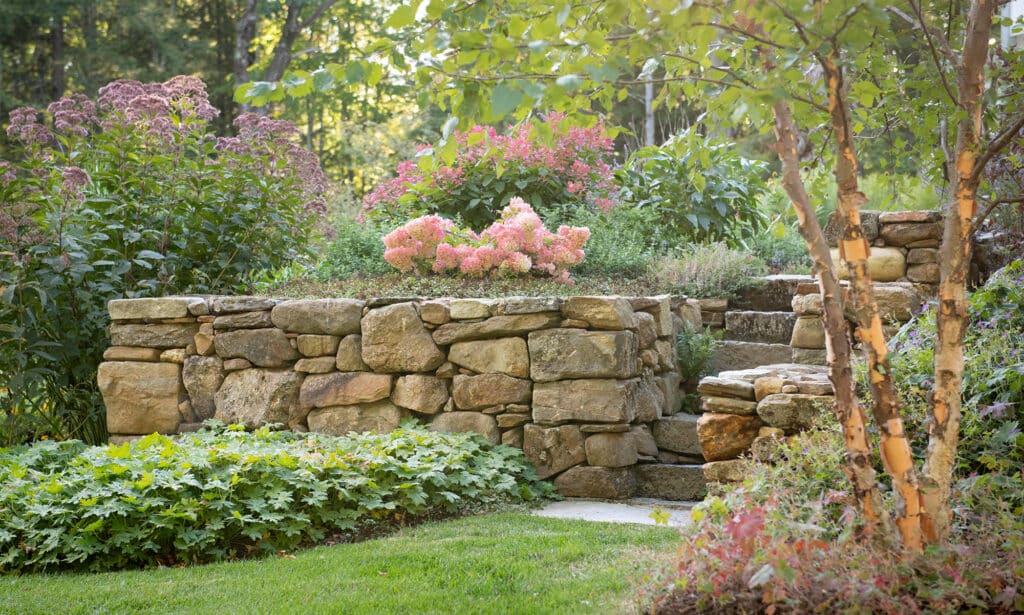
River Birch was used along the east side for its leafy shade canopy in summer and colorful bark in winter. Birch will also happily withstand the amount of rainwater that flows through the hillside property in spring. Birches are a natural first tree to grow up along the edges of forest clearings, so they made sense as transition trees along the edge of the property’s mature maple, ash, and oak forest. Hardy geranium forms easy-care swaths and has a fragrant leaf that deer tend to ignore.
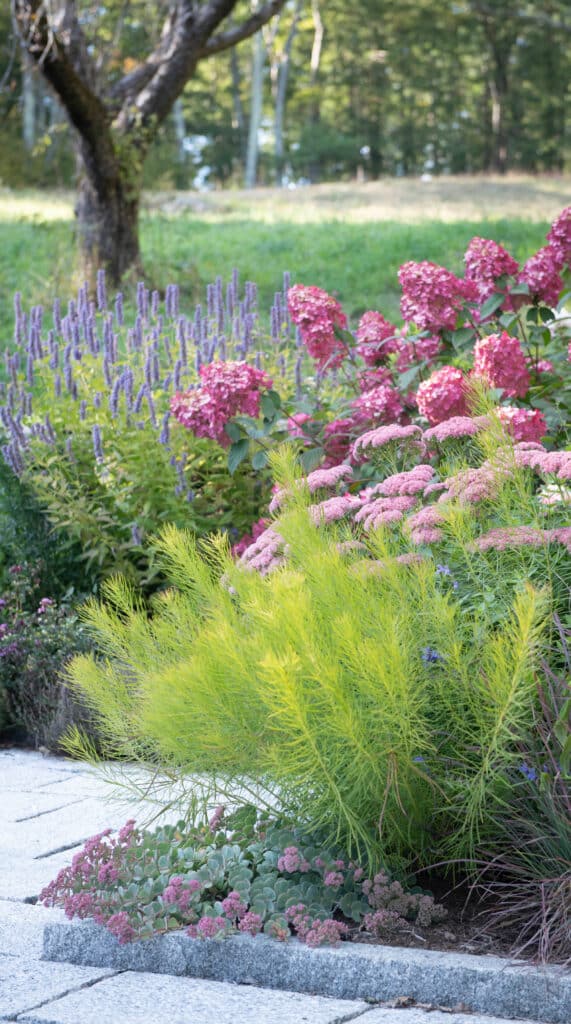 The planting design is intended to provide an abundance of blooms to support pollinators in spring, a soothing palette of greens, blues, and white in July, and warm, glowing colors in fall. On the back terrace, granite edging keeps the garden’s bounty within bounds.
The planting design is intended to provide an abundance of blooms to support pollinators in spring, a soothing palette of greens, blues, and white in July, and warm, glowing colors in fall. On the back terrace, granite edging keeps the garden’s bounty within bounds.
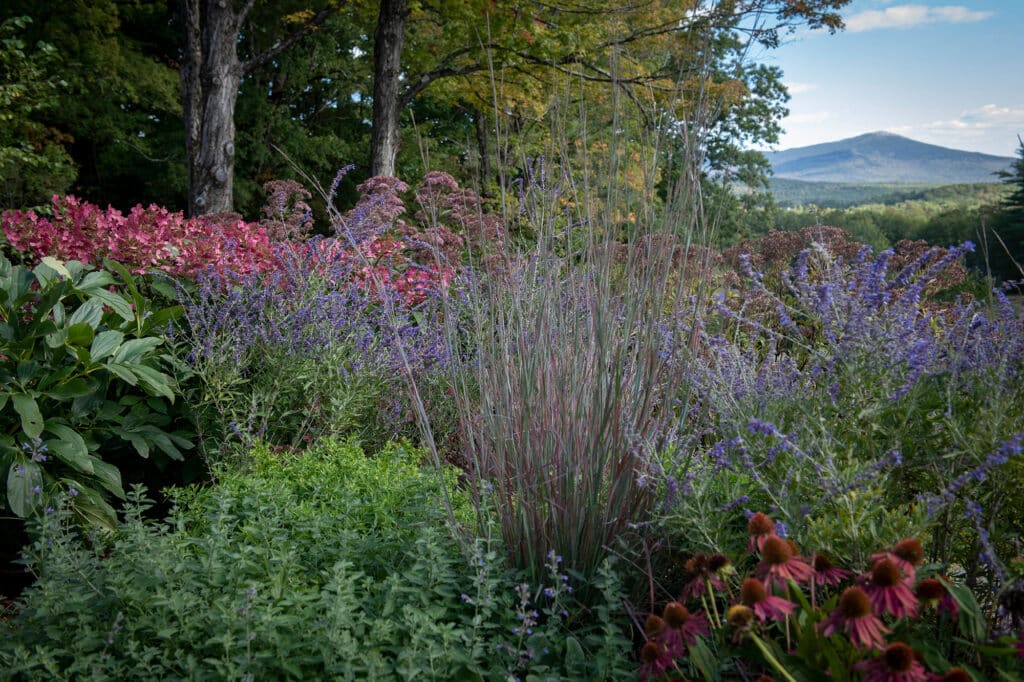 Fall-blooming plants fill the gardens with color and fragrance, while Monadnock sits serenely in the distance.
Fall-blooming plants fill the gardens with color and fragrance, while Monadnock sits serenely in the distance.
Project Designer: Bethany Gracia.


